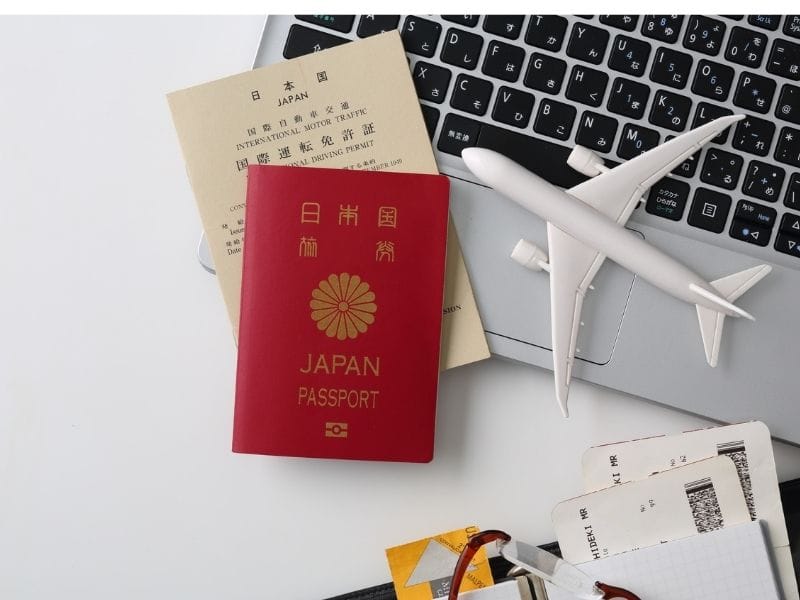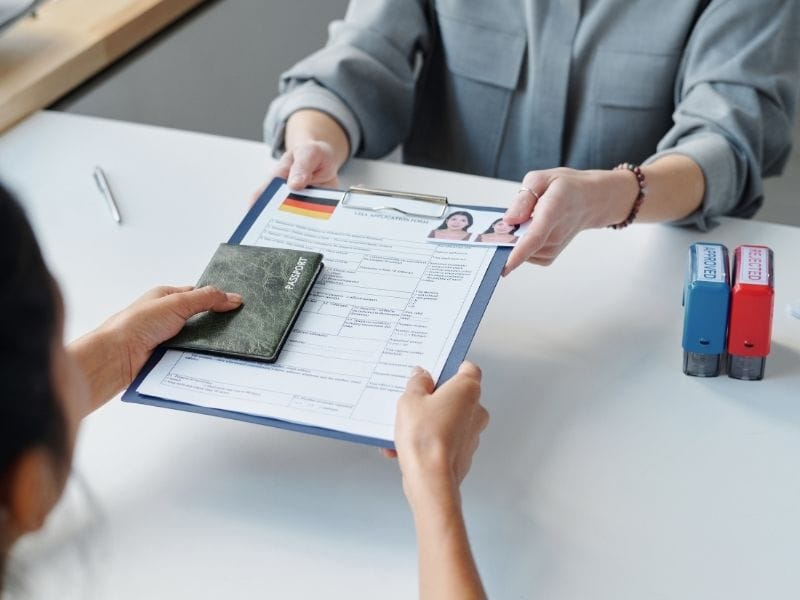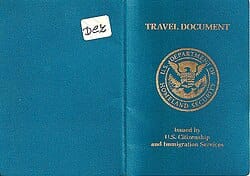Introduction
When planning an international trip, one of the most important aspects to get right is your travel documents. Without the correct paperwork, you could face delays, denied boarding, or even being turned away at the border. Whether you’re traveling for leisure, work, study, or migration, understanding the different types of travel documents and how to obtain them is essential.https://kanfservices.online/

1. What Are Travel Documents?
Travel documents are official papers issued by governments or authorized agencies that allow you to enter, stay in, or leave a foreign country legally. While most people think of a passport as the primary travel document, there are actually several different types depending on your purpose and nationality.
Common travel documents include:
- Passports – Standard document for international travel.
- Visas – Permission to enter or stay in a country for a set period.
- Travel Permits – For special circumstances like emergency travel.
- Refugee Travel Documents – Issued to refugees or stateless persons.
- Re-entry Permits – For residents returning after a trip abroad.
Link to U.S. Department of State – Travel Documents for passport and visa info.
2. Types of Travel Documents and Their Uses
A. Passports
A passport is the most recognized travel document in the world. It contains your personal details, photo, and nationality. Countries issue different types of passports:
- Regular Passports – For general public use.
- Diplomatic Passports – For diplomats and government officials.
- Official/Service Passports – For individuals traveling on government duty.
Tip: Always check your passport’s expiration date—many countries require it to be valid for at least 6 months after your intended return date.
B. Visas
A visa is an endorsement or stamp on your passport granting permission to enter a specific country. There are different visa types:
- Tourist Visa – For short-term leisure travel.
- Work Visa – For employment in a foreign country.
- Student Visa – For academic purposes.
- Transit Visa – For passing through a country en route to another.
C. Emergency Travel Documents
If your passport is lost or stolen abroad, some embassies can issue an emergency travel document that allows you to return home or continue your journey.
D. Refugee Travel Documents
Under the 1951 Refugee Convention, refugees and stateless persons can obtain travel documents to move between countries legally.
3. Why Travel Documents Are So Important
- Legal Entry and Exit – Without them, you can’t cross borders.
- Identity Verification – Proof of who you are and your nationality.
- Security – Helps authorities keep track of visitors.
- Access to Services Abroad – Some countries require proof of travel documentation for banking, health services, or accommodations.
4. Preparing Your Travel Documents Before a Trip
Step 1: Check Expiry Dates
Ensure your passport and visas are valid for the required duration.
Step 2: Make Photocopies
Keep both paper and digital copies of all documents in case of loss.
Step 3: Verify Entry Requirements
Visit official government websites to confirm what documents you need for your destination.
Step 4: Organize in a Travel Wallet
Keep all your documents in one secure, waterproof pouch.
5. Travel Document Rules by Region
Europe (Schengen Area)
The Schengen visa allows travel between 27 European countries with a single visa.
North America
Canada and the U.S. require passports for all international visitors. The U.S. also has the ESTA for travelers from Visa Waiver countries.

Middle East
Some countries require business travelers to have invitation letters in addition to visas.
Asia-Pacific
Visa-on-arrival options exist, but requirements vary greatly between countries.
6. Digital Travel Documents
Technology has made it easier to store and present travel documents:
- ePassports – Contain biometric data for faster border control.https://kanfservices.online/
- Digital Visas – Received via email, sometimes with QR codes.
- Mobile Boarding Passes – For flights, stored in smartphone wallets.
7. Tips for Protecting Your Travel Documents Abroad
- Keep them in a hotel safe when not needed.
- Avoid carrying them loosely in public places.
- Use RFID-blocking covers for passports.
- Report loss or theft immediately to your embassy.
8. Final Checklist Before Departure
✅ Passport (valid for 6+ months)
✅ Required visa(s)
✅ Health or vaccination certificates (if required)
✅ Copies of all documents
✅ Travel insurance papers
Traveling internationally is exciting, but one of the most crucial things you need to sort out before your trip is your travel document. Whether you’re taking a short vacation, a long-term work assignment, or even emigrating, having the right travel documents ensures you pass through immigration smoothly and avoid stressful delays.
In this detailed guide, we’ll cover types of travel documents, requirements by country, how to apply, and important travel tips for 2025.
1. What Is a Travel Document?
A travel document is an official identification paper issued by a government or recognized authority that allows an individual to travel internationally. While a passport is the most common form, there are many other travel documents depending on your nationality, immigration status, or travel purpose.
Examples include:
- Standard Passport
- Diplomatic Passport
- Refugee Travel Document
- Emergency Travel Certificate
- Temporary Travel Pass
- Travel Visa
For official definitions, you can check U.S. Department of State – Travel Documents and International Air Transport Association (IATA) resources.
2. Why Are Travel Documents Important?
Travel documents serve as:
- Proof of identity – to show who you are to immigration officials.
- Proof of nationality – to establish your citizenship.
- Permission to enter – many countries require visas in your passport before entry.
- Proof of legal status – for refugees, stateless persons, and residents abroad.
If you don’t have valid travel documents, you can be denied boarding, detained at a border, or even face fines and deportation.https://kanfservices.online/

Link to U.S. Department of State – Travel Documents for passport and visa info.
3. Types of Travel Documents
Here’s a breakdown of the main types of travel documents:
A. Passport
The most recognized travel document globally. Types include:
- Regular Passport – for general public.
- Diplomatic Passport – for diplomats and government officials.
- Official Passport – for government workers traveling on duty.
B. Visa
A visa is an endorsement or stamp on your travel document granting permission to enter, leave, or stay in a country.
Link to U.S. Department of State – Travel Documents for passport and visa info.
C. Refugee Travel Document
Issued under the 1951 Refugee Convention, allowing recognized refugees to travel internationally.
D. Emergency Travel Document
For citizens who lost their passport abroad and need to return home urgently.
4. How to Apply for a Travel Document
While the process varies, most countries follow these steps:
- Prepare Required Documents – proof of citizenship, photos, application forms.
- Submit Application – online or at the passport office.
- Pay Fees – prices vary from $50 to $200 depending on the country.
- Attend an Interview – sometimes required for visas and refugee documents.
- Wait for Processing – can take 2 days to 8 weeks.
For U.S. travelers, see the U.S. Passport Application Guide.
Link to International Air Transport Association (IATA) Travel Centre for entry requirements.
5. Country-Specific Travel Document Rules
Different countries have unique travel document requirements:
- USA – All travelers need a valid passport or U.S. passport card for entry/exit.
- Schengen Area – Requires passports valid at least 3 months beyond stay.
- UK – Accepts electronic passports (ePassports) only.
- Canada – Strongly recommends passports valid for at least 6 months.
6. Digital Travel Documents
In 2025, many countries are testing digital passports stored on smartphones for faster airport clearance. The International Civil Aviation Organization (ICAO) is working on Digital Travel Credentials (DTCs), which may replace physical passports in the future.
7. Travel Document Tips
- Always check expiration dates before booking flights.
- Keep digital copies in your email or secure cloud storage.
- Apply for renewals 6–12 months before expiration.
- Carry backup ID like a driver’s license.
8. Common Travel Document Problems
- Expired Passport – can prevent boarding.
- Damaged Document – torn pages or water damage may invalidate it.
- Visa Denial – due to incomplete applications or security issues.Blog
If you face these problems, visit your embassy or consulate immediately.
9. Useful External Resources
- International Air Transport Association (IATA) Travel Centre – for entry requirements.
- World Travel & Tourism Council (WTTC) – travel updates.
- U.S. Department of State – Travel – passport and visa info.
Understanding the Role of a Travel Document in Global Mobility
A travel document is more than just a piece of paper or a plastic card — it’s the key that opens borders and enables you to experience the world. Without an official travel document, such as a passport, visa, or special permit, international travel becomes nearly impossible. While the passport remains the most recognized travel document globally, many other types serve unique purposes, from refugee travel documents to emergency temporary papers.
When planning your next trip, it’s important to understand exactly which travel document you need. This will depend on:
- Your nationality.
- The country you’re visiting.
- The duration and purpose of your travel.
For example, a business traveler heading to the European Union may require not only a valid passport but also a Schengen visa — another essential travel document in this case. On the other hand, a U.S. permanent resident visiting Canada might be able to travel with just their passport and PR card.https://kanfservices.online/
📌 Quick Resource: For official country-by-country travel document requirements, check the International Air Transport Association (IATA) Travel Centre.

Types of Travel Documents and Their Specific Uses
- National Passports – The standard travel document issued to citizens by their home country. It’s accepted by almost every nation and is the most versatile form of identification abroad.
- Refugee Travel Documents (RTD) – Issued to refugees and stateless individuals under the 1951 UN Refugee Convention. An RTD allows them to travel internationally when they cannot get a passport from their home country. Learn more at the UNHCR Official Page.
- Temporary Travel Documents – Granted in emergency situations, such as when your passport is lost or stolen during travel. These are often valid for a single trip back to your home country.
- Diplomatic and Official Passports – Special travel documents for government officials, offering diplomatic privileges abroad.
- Electronic Travel Authorizations (eTA) – Digital travel documents linked to your passport, such as Canada’s eTA system, which allows visa-free nationals to enter for short stays. Visit the Government of Canada – eTA page for eligibility details.
Link to International Air Transport Association (IATA) Travel Centre for entry requirements.
Why Keyword Density Matters in Travel Document Blogs
When you’re writing about a travel document, using the term naturally throughout the content improves SEO performance. However, overstuffing can lead to penalties. The ideal balance is to mention “travel document” often enough that both readers and search engines recognize the topic’s focus.
In this extended guide, we aim for natural integration of the keyword while also providing in-depth value.
Travel Document Validity and Renewal
Traveling with an expired travel document can lead to denied boarding, fines, or even deportation. To avoid last-minute stress:
- Always check the expiration date of your travel document before booking flights.
- Some countries require at least 6 months of validity beyond your intended return date.
- Renewal times vary — some passports take weeks, others months.
For example, the U.S. Passport Renewal process can take 8–11 weeks under standard service, according to the U.S. State Department.
Internal Resources for Travel Document Holders
- Your Site’s Visa Requirement Checker
- Guide to Preparing for International Travel
- Tips for Safeguarding Travel Documents Abroad
Outbound Resources for Official Travel Document Information
- IATA Travel Centre – Country-specific entry requirements.
- International Civil Aviation Organization (ICAO) – Passport and document standards.
- UNHCR – Refugee travel documentation details.
Protecting Your Travel Document While Abroad
A travel document is a prime target for thieves because it’s valuable on the black market. To protect it:
- Keep it in a hotel safe when not needed.
- Use a neck pouch or hidden wallet while traveling.
- Make digital and paper copies — keep them separate from the original.
- Register your travel document with your country’s embassy when possible.https://kanfservices.online/
Travel Document and Visa-Free Travel
Some travelers enjoy visa-free access to many countries due to the strength of their passport. However, a visa-free entry still requires carrying a valid travel document. For example:
- Japanese citizens have one of the strongest travel documents globally, with access to 193 countries without a visa (as per the Henley Passport Index).
- Afghan citizens, by contrast, have visa-free access to fewer than 30 countries.
Link to International Air Transport Association (IATA) Travel Centre for entry requirements.
The Digital Future of the Travel Document
Governments are moving towards biometric passports and digital travel credentials. These advancements enhance security and speed up airport checks.
- Biometric chips store encrypted personal data.
- Mobile-based travel documents are being tested for borderless travel zones.
The International Air Transport Association predicts that digital IDs may replace paper-based travel documents for certain international flights within the next decade.

FAQs – Travel Document Essentials
Q1: What is the most important travel document?
A valid passport is the most recognized travel document worldwide, required for almost all international travel.
Q2: Can I travel with a digital copy of my travel document?
No. While digital copies are useful backups, you must present the original physical travel document at border control.
Q3: How do I replace a lost travel document abroad?
Report the loss to the local police and contact your country’s embassy for an emergency travel document.
Q4: What is a travel document number?
It’s a unique number printed on your passport or other travel document used for identification.
Q5: Do children need a separate travel document?
Yes, most countries require each child to have their own passport or travel document.

Link to International Air Transport Association (IATA) Travel Centre for entry requirements.

